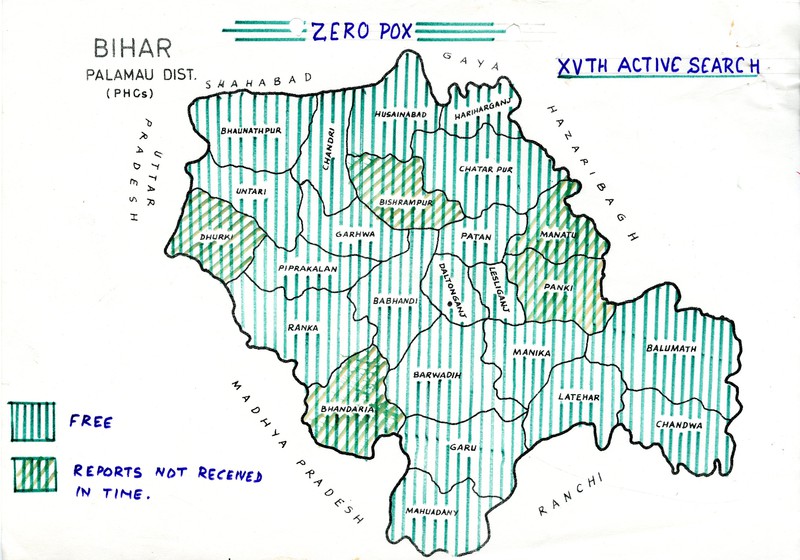Zero smallpox
In May 1975, the very last case of smallpox was found in India. For the next two years, searches and active surveillance were continued to ensure there were no hidden smallpox pockets. In this phase of the program, data was collected on the various rashes that health workers encountered in their field work. This led to the development of additional reporting documents, such as the Fever and Rash Outbreak Surveillance. This form required that each health worker report all cases of fever with rash, cases of and deaths due to chickenpox as well as cases of suspected smallpox.
From March to November 1976, 110 million households -- in more than half a million Indian villages and in 260 urban areas -- were searched for new smallpox cases. (International Smallpox Assessment Commission 5) Only cases of chickenpox were found.
In December 1976 and January 1977, a National Commission (including World Health Organization epidemiologists) visited all States and Union Territories of India, except the Andaman and Nicobar Islands, and scrutinized program activities.
A few months later, in April 1977, the International Commission for the Assessment of Eradication of Smallpox in India visited the country, conducting its own evaluations in the field as well as reviewing the documentary evidence provided by the country.
The International Commission finally certified that India was free of smallpox. Two years later, in December 1979, the Global Commission for the Certification of Smallpox Eradication declared that smallpox had been eradicated from the planet.

Finding every case

Chronology of the eradication campaign



